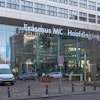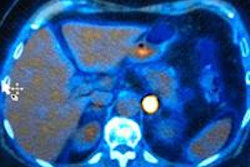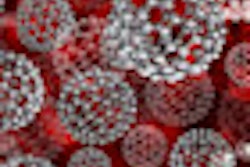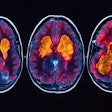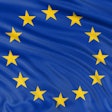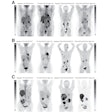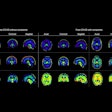
The 14th Conference on Contrast Agents and Multimodal Cellular and Molecular Imaging begins in Valencia, Spain, today. Organized by the European Magnetic Resonance Forum (EMRF) and the Round Table Foundation (TRTF), these biennial meetings are designed to promote scientific exchange and interaction among academic and industry researchers. The main organizer, Dr. Peter Rinck, PhD, speaks about the event.
AuntMinnieEurope.com: What has changed since your first meeting 25 years ago?
 Dr. Peter Rinck, PhD, is a professor of diagnostic imaging and the president of the Council of the Round Table Foundation (TRTF) and European Magnetic Resonance Forum (EMRF).
Dr. Peter Rinck, PhD, is a professor of diagnostic imaging and the president of the Council of the Round Table Foundation (TRTF) and European Magnetic Resonance Forum (EMRF).
Rinck: People, attitudes, and the spectrum of scientific research have all changed. The late 1980s were the heyday of contrast agent development in MRI, and partly in x-ray and CT. Most of the products still used today in clinical imaging were developed and introduced during those years -- and all of them have been discussed and presented at these small conferences. Some of the scientists involved in the early days still attend the meetings and are a very valuable source of information for the younger generation that has started moving in during the last 10 years. Newcomers have brought new attitudes, among them a wider cooperation between scientific disciplines.
Do you see increased interest in this kind of research among younger radiologists?
Radiologists are among the users, the consumers of the end products, but they are not the developers. We see hardly any radiologists among the participants. Worldwide, there are very few institutions where radiologists can focus on long-term research. The gap between science and medicine does not close. Unfortunately, there is also a lack of clinical and economic relevance in much of the existing academic research.
There is a large market, but it is stagnant, or even partly decreasing. Look at the big trade fairs such as the RSNA and ECR and the multimillion dollar or euro exhibits and shows. Some of the major commercial exhibitors in the field have disappeared; the commercial participation at the last annual meeting of the RSNA was approximately one-third smaller than in previous years.
The big contrast-agent bubble was built upon gigantic profits, and when these profits collapsed, the bubble burst. The reasons are manifold; aside from management blunders and the dramatic drop of prices, one of the main causes is the lack of novel and reliable third-generation compounds for the mass market of diagnostic and therapeutic applications.
How about molecular imaging?
Whether you call it "molecular imaging," "nanotechnology," "personalized medicine," or the simpler and more easily understandable "targeted imaging," the ideas are there and we can see them in their wide spectrum at this year's conference. New approaches in x-ray imaging, MRI, radioisotope applications, and optical imaging are emerging. After years of slow motion at university research centers and other academic institutions, there are new concepts, as well as old ideas, that are rehashed and new compounds proposed. However, at present, these ideas are not translatable to commercial use.
Is sufficient support being given by the European Union and national funding agencies?
There are a number of laudable projects supporting academia, large research institutions, and industry -- and maintaining a general infrastructure. It is reassuring to see that so many scientific groups can dedicate their efforts to new ideas in biomarker, bioenhancer, and targeted imaging research. The potential seems enormous, but where are the applications after so many years of scientific input? There will be some, but the time frame will be another 20 years, and in possible genetic-based uses, it will take far longer.
If you see and face these advances, you will be able to deal with them. We will analyze them during several round-table discussions at this year's conference because these aspects must be included in the road to future research projects. Those who are prepared have a higher chance to stay at the forefront of science.
Editor's note: Tomorrow we will discuss some of the projects presented at the meeting in Valencia. The conference runs until Friday.



